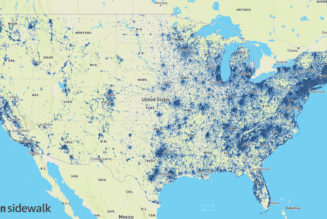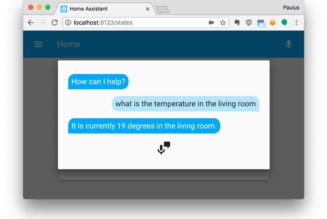
Let’s spend a few minutes today catching up on the antitrust inquiries into Google. There are investigations related to competition underway against most of the biggest tech giants – Apple, Facebook, and Amazon face similar inquiries, and their CEOS are scheduled to join Sundar Pichai for a virtual hearing with the House of Representatives later this month. But there’s reason to believe the case against Google will land the soonest of any of them — in May, the New York Times reported that charges could come “as early as this summer.”
Scrutiny into the company’s business practices has since accelerated. Politico reported last week that California, which sat out an investigation led by 48 attorneys general, is preparing to mount its own inquiry into Google’s competition practices. As Leah Nylen noted in that report: “Alabama is now the only state that is not investigating the company.”
At the same time, reporters are mounting their own investigations of their own, and everywhere they look, they find Google giving preference to its own products over those of its competitors.
In Bloomberg this week, Gerrit De Vynck looked at the company’s decision to ad a fourth ad to the top of search results in 2015. The effect of all those extra paid links has been to reduce organic traffic to many businesses and publishers, making life more difficult for them. These days, when people visit Google, the majority of them get the information they sought from Google itself, and never touch the open web at all. That has strengthened the case of those who argue that the company’s moves, whatever they have brought users in terms of convenience, have harmed competition.
De Vynck notes that Google, like any other company, has to manage the needs and wants of its customers and its businesses. “Users want the best answers,” he writes. “Web developers need eyeballs. Shareholders demand growth.” At the same time, some businesses are now arguing that the mix of extra ads and answers provided directly within Google is eroding the fabric of the web.
De Vynck writes:
Kevin Hickey, chief executive officer of Online Stores Inc., said these changes have forced him to spend more on Google search ads to keep traffic flowing to his e-commerce businesses. More than a decade ago, about two-thirds of Hickey’s Google traffic came from free, or organic, listings. But as Google increased ad slots to the top of results, that mix flipped. Organic results account for about 20% of visitors to his sites now, and he spends about 10% to 15% of his revenue on Google ads. He has raised prices, but his profit margins have shriveled.
“The prices that consumers are paying are now higher because of Google’s business model,” Hickey said.
Google says consumers are simply no longer satisfied with the 10 blue links of days past, and that despite changes it continues to send a firehose of traffic to the open web. A large portion of searches are for commoditized information like weather and sports that hardly differ in their presentation on any one web page; why not just put it all in search results? On the other hand, the idea that Google search has gradually worsened is not new, and for many types of query I find it persuasive. (Search for “shoes” or “furniture” on Google, and then on Pinterest, and tell me which is more useful.)
Elsewhere, the Wall Street Journal on Tuesday reported that Google searches for videos ranked YouTube clips higher than rivals, even when the same clips posted to Facebook, Dailymotion, and other outlets were first posted on those sites, and have many more views. (Google says it does not take into account the number of views a video receives when ranking them in search, which is … weird?)
Sam Schechner, Kirsten Grind and John West write:
Engineers at Google have made changes that effectively preference YouTube over other video sources, according to people familiar with the matter. Google executives in recent years made decisions to prioritize YouTube on the first page of search results, in part to drive traffic to YouTube rather than to competitors, and also to give YouTube more leverage in business deals with content providers seeking traffic for their videos, one of those people said. […]
A Google spokeswoman, Lara Levin, said there is no preference given to YouTube or any other video provider in Google search. “Our systems use a number of signals from the web to understand what results people find most relevant and helpful for a given query,” Ms. Levin said. She declined to comment on the specific examples cited in this article.
Why YouTube showed so strongly in this study is a matter of some debate. For example, if you go to your second-favorite search engine (Bing.com, duh) and query the Tasty videos that BuzzFeed made famous on Facebook, the top links are all from YouTube. Presumably this is not the result of Google interference.
On the other hand, Google can and does promote YouTube in many other ways throughout the product; click “Google apps” at the top of your Gmail inbox and you’ll see it right there, for example. Over time, Google helped YouTube become synonymous with video, and so now it may not even seem suspicious that most searches for videos lead you directly to it. “I’d click the YouTube [link] whether it was listed first or seventh on the screen b/c I trust YouTube more than those other sites,” writes one of the commenters on the Journal story. He meant it as an indictment of the Journal’s reporting — “waste of time and resources,” he called it — but I wonder if on some level he isn’t making the reporters’ point for them.
“Our systems use a number of signals from the web to understand what results people find most relevant and helpful for a given query,” Google told me when I asked about the Journal’s report. “To ensure that these signals are used equally and fairly for all sites, we use signals that are not specific to any one site or platform. Therefore, the number of views, likes or comments a video has received on a given platform is not a factor in our ranking systems. Our video ranking systems use signals from all video sources in the same way— there is no preference given to YouTube or any other video provider.”
And yet, despite all those signals, YouTube still turns up the winner more often than not. Google often talks about search results as if they are naturally occurring phenomena, like gravity, rather than the result of editorial decision making. And yet it’s hard to believe that had the Journal reached the opposite conclusion — that Google searches rarely, if ever, turned up YouTube links — that some Google product manager wouldn’t be tasked with fixing it.
The underlying question here is to what extent Google should be given the freedom to present search results as it sees fit, no matter the cost to other businesses. The European Union has fined the company three times over the years for acting in ways it said had harmed competition, most recently for $1.7 billion this year. So far the US government has not formally stated its case. But it’s hard to look at Google search in 2020 and conclude that it has proved conclusively helpful to competition. Whatever signals the company’s algorithms might be taking into account as it ranks search results, it’s somehow always Google that comes out on top.
Pushback
In Monday’s email edition, I said that the United Kingdom has an advertising blackout in the days leading up to the election. That’s not right, as many of you wrote in to point out. One reader put it this way: “Our blackout is on radio and TV only. That means while the polling stations are open on the day of the election, they’re not allowed to broadcast discussions and analysis of election issues.
Other campaigning, including online, is still allowed to happen though. Often, parties hold back a significant chunk of their digital ad spending for the last few days and hours — i.e., you could argue it’s been a way of getting around the broadcast ban.”
A better example for what Facebook is considering might be Australia, which bans broadcasters from running ads from midnight on the Wednesday before polling day to the close of the poll on polling day.
The Ratio
Today in news that could affect public perception of the big tech platforms.
Trending up: YouTube is finally letting creators know exactly how they’re making money on the platform. The company has a new metric called RPM (revenue per mille) which shows a creator’s total revenue (both from ads and other monetization areas) after YouTube takes the cut. (Julia Alexander / The Verge)
Governing
⭐ Ben Thompson makes the case that the United States should take strong action now against TikTok — but also WeChat, Zoom, and other apps. It’s a step necessary to confronting an ideological war that has been under way for 20 years now, he argues:
TikTok’s algorithm, unmoored from the constraints of your social network or professional content creators, is free to promote whatever videos it likes, without anyone knowing the difference. TikTok could promote a particular candidate or a particular issue in a particular geography, without anyone — except perhaps the candidate, now indebted to a Chinese company — knowing. You may be skeptical this might happen, but again, China has already demonstrated a willingness to censor speech on a platform banned in China; how much of a leap is it to think that a Party committed to ideological dominance will forever leave a route directly into the hearts and minds of millions of Americans untouched?
Again, this is where it is worth taking China seriously: the Party has shown through its actions, particularly building and maintaining the Great Firewall at tremendous expense, that it believes in the power of information and ideas. Countless speeches, from Chairman Xi and others, have stated that the Party believes it is in an ideological war with liberalism generally and the U.S. specifically. If we are to give China’s leaders the respect of believing what they say, instead of projecting our own beliefs for no reason other than our own solipsism, how can we take that chance?
The US Immigration and Customs Enforcement and Department of Homeland Security have rescinded a policy that would require international students to take in-person classes in order to remain in the US. The agencies reached an agreement with Harvard and MIT, who filed a lawsuit on July 8th over the policy. Tech companies had spoken out against the negative effects of the draconian policy. (Monica Chin / The Verge)
COVID-19 contact tracing apps have only about a 9.3 percent adoption rate in the world’s most populous countries. The analysis, by Sensor Tower, focused on government-endorsed apps in countries including Australia, France, Germany, and India. (Sensor Tower)
Google is negotiating to invest $4 billion in India’s Reliance Jio. Facebook and other Silicon Valley companies have recently announced a collective $16 billion in the fast-growing telecom. (Baiju Kalesh, Anto Antony, Manuel Baigorri, and Saritha Rai / Bloomberg)
Trump’s reelection campaign is complaining that Facebook’s goal of registering 4 million voters in time for November’s election is an attempt to swing the election in favor of former Vice President Joe Biden. The official position of the Republican party is now that voter registration is a partisan issue. (Eric Newcomer / Bloomberg)
President Trump is using Facebook to microtarget voters, while Joe Biden is using it increasingly to ask for donations. About 68 percent of the president’s ads are seen fewer than 1,000 times — compared to 34 percent for Biden. (Bill Allison and Misyrlena Egkolfopoulou / Bloomberg)
Amazon told employees at a New York warehouse that they won’t be punished for taking extra time to wash their hands. The company also said workers wouldn’t be disciplined for falling short of quotas based on how many tasks they complete each hour. It’s basically a dream job now. (Josh Eidelson / Bloomberg)
Here’s a map of more than 400 hyperpartisan sites masquerading as local news. Many are funded and operated by government officials, political candidates, PACs, and political party operatives. (Jessica Mahone and Philip Napoli / Neiman Lab)
Industry
⭐Black influencers are underpaid, at times making 10 times less than their white counterparts. An Instagram account called Influencer Pay Gap is exposing the pay disparities and pushing for change in the industry. Here’s Ashley Carman at The Verge:
Influencer Pay Gap was created by Adesuwa Ajayi, a Black woman who works at the talent agency AGM and manages influencers. Through the account, Ajayi asks influencers to anonymously detail their past brand campaigns, sharing their engagement rate (what percentage of people interact with their content), how much they were paid, what they had to do, their race, and where they’re based. Ajayi started the account about a month ago, and more than 30,000 people already follow it. She says she receives at least 100 DMs a day, which has led to multiple “sleepless nights.”
“I think sometimes we forget that the influencer space is still in its infancy in comparison to different forms of maybe marketing or whatever it might be,” she says. “So it’s very much unregulated to a large degree, and what has definitely become apparent from the page is just seeing how many influencers need help.”
Snapchat is testing a new navigation experience that allows users to move through public content with a vertical swiping motion — a gesture that’s been popularized by TikTok. The test is focused on content that’s published publicly to Snapchat Discover, not your friends’ private Stories. (Sarah Perez / TechCrunch)
WhatsApp went down for an hour on Tuesday. The cause has not yet been reported. (Tom Warren / The Verge)
Facebook developed a robot to install fiber cables on medium-voltage power lines around the globe. The aim is to make it cheaper for internet service providers to build out their networks using super-fast and reliable fiber connections. (Shara Tibken and Queenie Wong / CNET)
Amazon is testing out a new smart shopping cart that lets you check out without a cashier. The Dash Cart automatically detects the items you’ve picked up. It’s coming first to Amazon’s grocery store in the Woodland Hills neighborhood of Los Angeles. (Nick Statt / The Verge)
Taylor Lorenz explains the cake meme that took over Twitter this week. “Watching a sharp knife slice cleanly through what appears to be an everyday object is surprising and somehow deeply gratifying,” she writes. (Taylor Lorenz / The New York Times)
Here’s a profile on Nikkia Reveillac, Twitter’s new head of research from Trinidad and Tobago. (Narissa Fraser / Newsday)
The growing partisan divide between people who oppose shelter-in-place orders and those who think the restrictions are a public health necessity is playing out on two North Carolina Facebook groups. (Kaitlyn Tiffany / The Atlantic)
Apple told employees that a full return to US offices won’t happen before the end of the year. Retail staff will work remotely as the company shuts down some of its stores again, due to the rising number of coronavirus cases. Apple is also shipping Covid-19 test kits to employees’ homes. (Mark Gurman / Bloomberg)
Startups that never planned on going fully remote are changing their plans amid the coronavirus pandemic. Some are letting leases expire or looking for ways to get out of longer contracts. (Ari Levy / CNBC)
Babysitters and camp counselors are trying to provide childcare on video calls due to the ongoing pandemic. Kids aren’t that into it, though. (Julie Jargon / The Wall Street Journal)
Some of the wild stories on Reddit’s r/relationships are fabricated. This article features stories of people who made up some of the recent viral myths. (Amelia Tait / Vice)
Things to do
Stuff to occupy you online during the quarantine.
Browse the Atlas of Surveillance. Compiled by students and volunteers, the atlas is a database of surveillance technologies used by law enforcement authorities across the United States — including drones, body cameras, facial recognition, and more.
Check out a new demo of mmhmm. The virtual camera, which I profiled earlier this month, will soon allow you to control your Zoom presence with a PlayStation controller.
Download all your old TikToks — while you still can!. A new site called FYP.rip does the trick.
Those good tweets
I’m confused. Is anyone else still in quarantine?
— Danielle Young (@RhapsoDani) July 12, 2020
Talk to us
Send us tips, comments, questions, and suspicious Google search results: casey@theverge.com and zoe@theverge.com.










